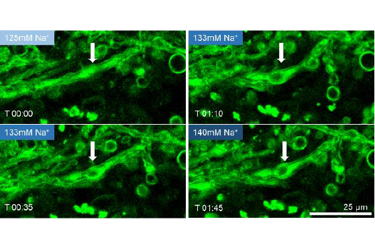Sub 50 Femtosecond Pulse Lasers For Gentler Multiphoton Microscopy

Finding the ideal ultra-fast laser source for a multiphoton imaging setup is not trivial. It is a fine balance between peak power, pulse energy and laser wavelength.
In this white paper we discuss important laser parameters and the impact these laser parameters have on the quality of the results.
Background
Multiphoton and higher-order harmonics generation microscopy is particularly suited for high-resolution three-dimensional and live-cell imaging, where single photon techniques are limited by out-of-focus fluorescent background and penetration depth.
Imaging techniques based on multiple photon interactions, such as two or three photon excitation and higher-order harmonics generation such as Second or Third Harmonic Generation (SHG or THG) imaging, have become very attractive tools in many biomedical research or clinical diagnosis applications, as they provide high contrast imaging capabilities with reduced tissue damage while not necessarily needing artificially induced fluorescent dyes.
For multiphoton excitations to occur, incident photons must arrive at the sample at the same time and place, in order to increase the probability of simultaneous multiphoton absorption events by a single fluorescent compound, which means that the efficiency in multiphoton excitation is strongly dependent on the peak intensity of the incident light during the pulse. Therefore, the shorter the pulse, the higher the peak intensity and the stronger the generated signal.
Get unlimited access to:
Enter your credentials below to log in. Not yet a member of Photonics Online? Subscribe today.
